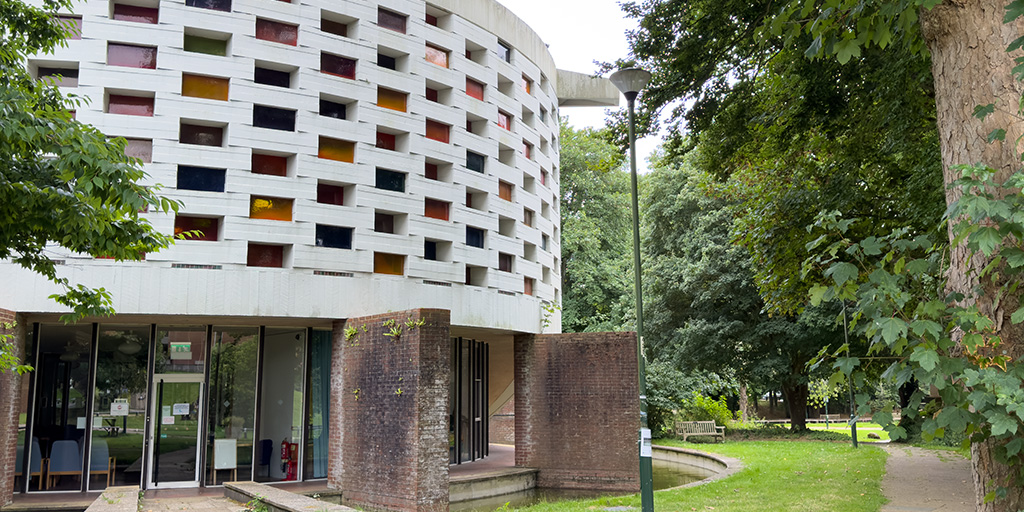
Building a Digital Holocaust Memory Lab, Part 1
by Mel Poluck
The Landecker Digital Memory Lab is building a brand-new programme of work ahead of its official launch this autumn. In this week’s blog, we offer the first in a series of behind-the-scenes glimpses into what we’ve done so far.
The Landecker Digital Memory Lab is up and running.
With a packed programme over the next five years, we’ve already made some important inroads.
It was back in April, at a public lecture in Melbourne that our Director Dr Victoria Grace Richardson-Walden announced that we’d secured funding from the Alfred Landecker Foundation to set up a programme focused on sustaining digital Holocaust memory into the future.
She was there for a two-week residency at the Melbourne Holocaust Museum, collecting important interviews and walkthroughs for our ‘living database-archive’ (more on this later). Alongside her public lecture, she co-hosted, with Dr Anna Hirsch (Manager of Collections and Research at the museum), the symposium ‘Preserving Truth in the Digital Age’.
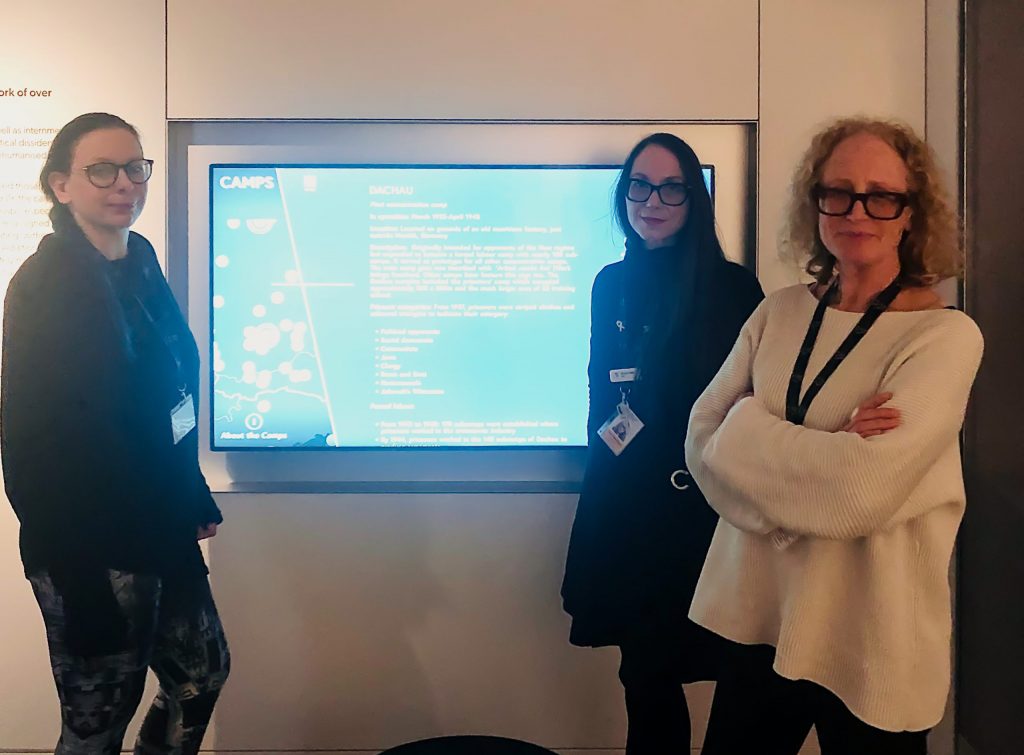
Our Director, Prof Walden with her hosts at the Melbourne Holocaust Museum.
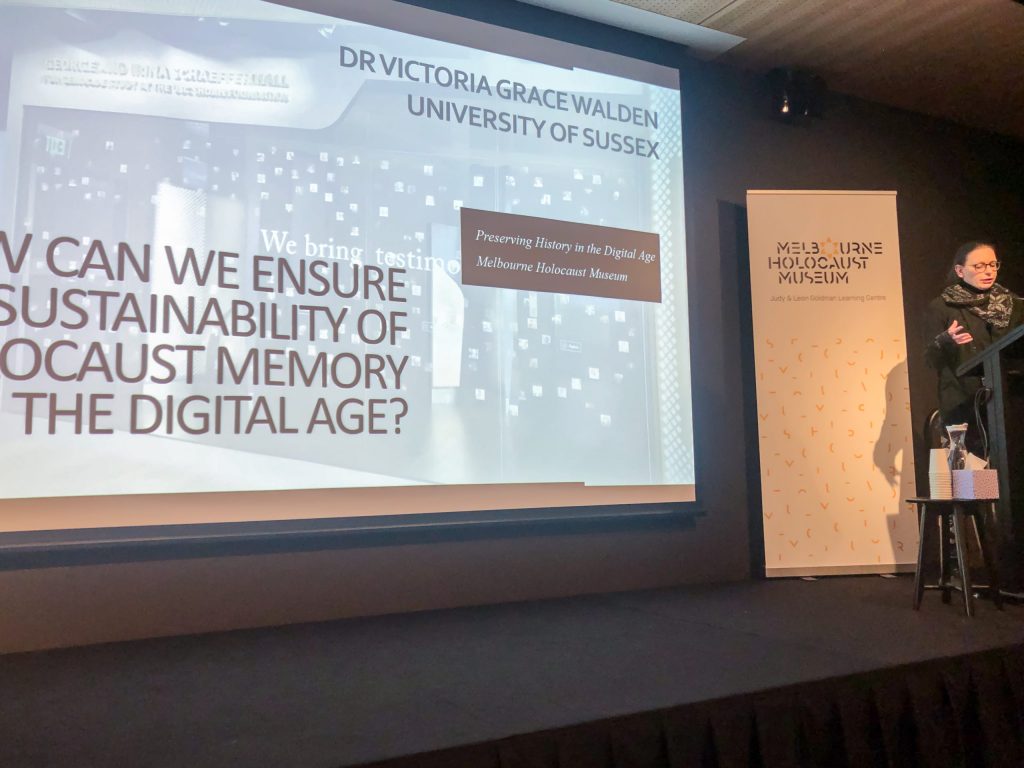
Dr Walden presents her research at the symposium in Melbourne.
The Landecker Digital Memory Lab, based within the University of Sussex’s School of Media, Arts and Humanities is led by Victoria, a world-leading international academic focused on digital Holocaust memory and education. We build on the solid foundations of her previous Digital Holocaust Memory project.
In June, she put together our initial team:
- Dr Kate Marrison, Research Fellow in Digital Memory
- Philippa Murnaghan, Senior Project Officer
- Mel Poluck, PR and Communications Manager
- Steve Wang, Digital Media Specialist
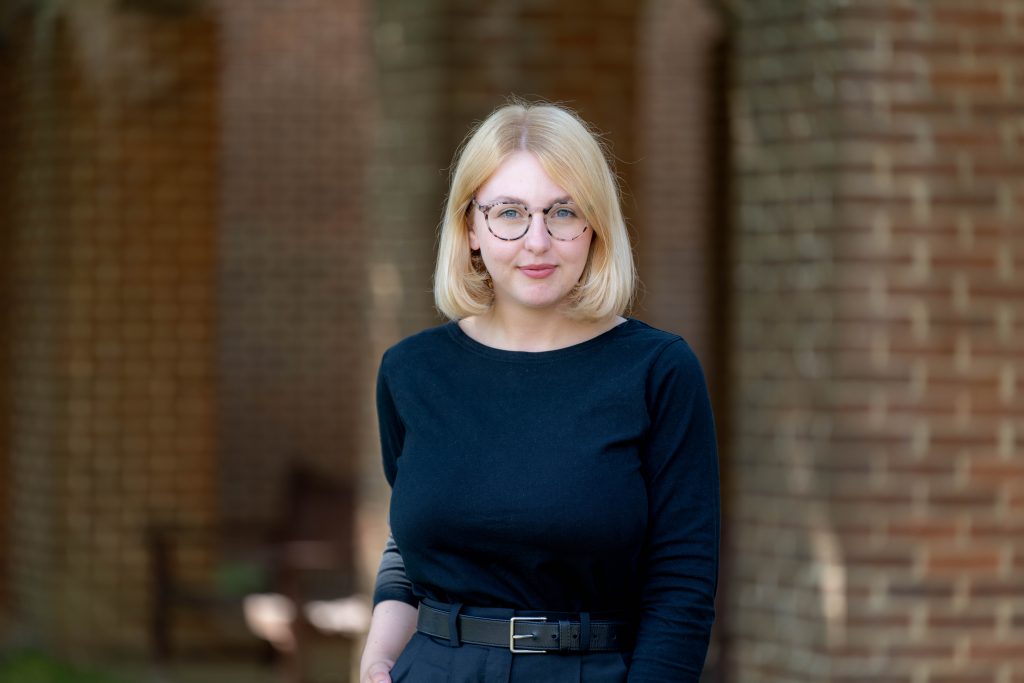
Dr Kate Marrison
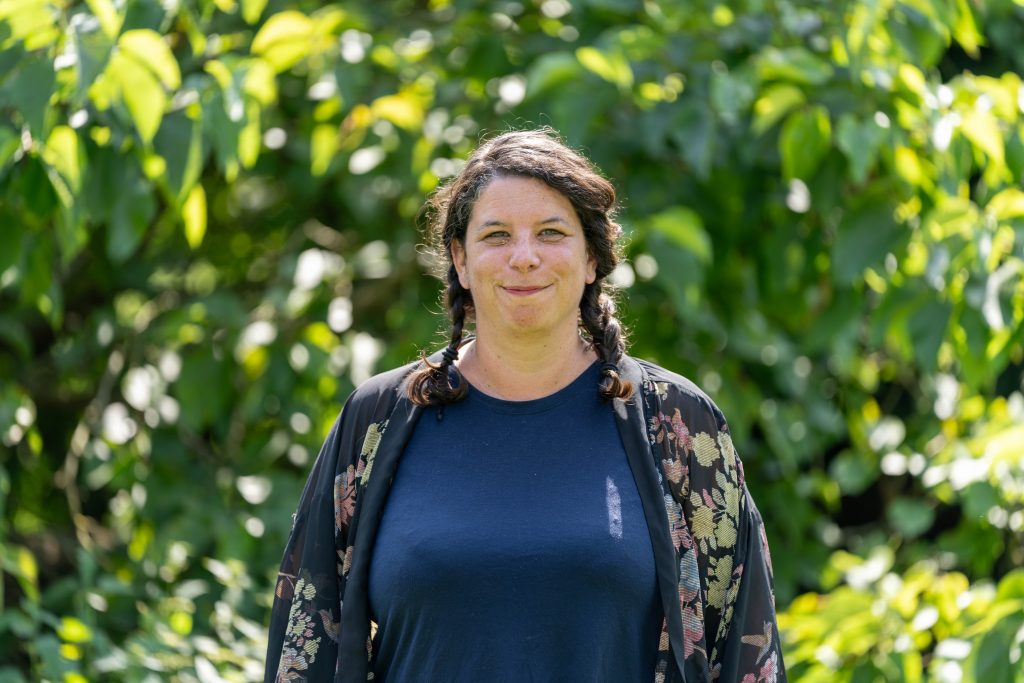
Philippa Murnaghan
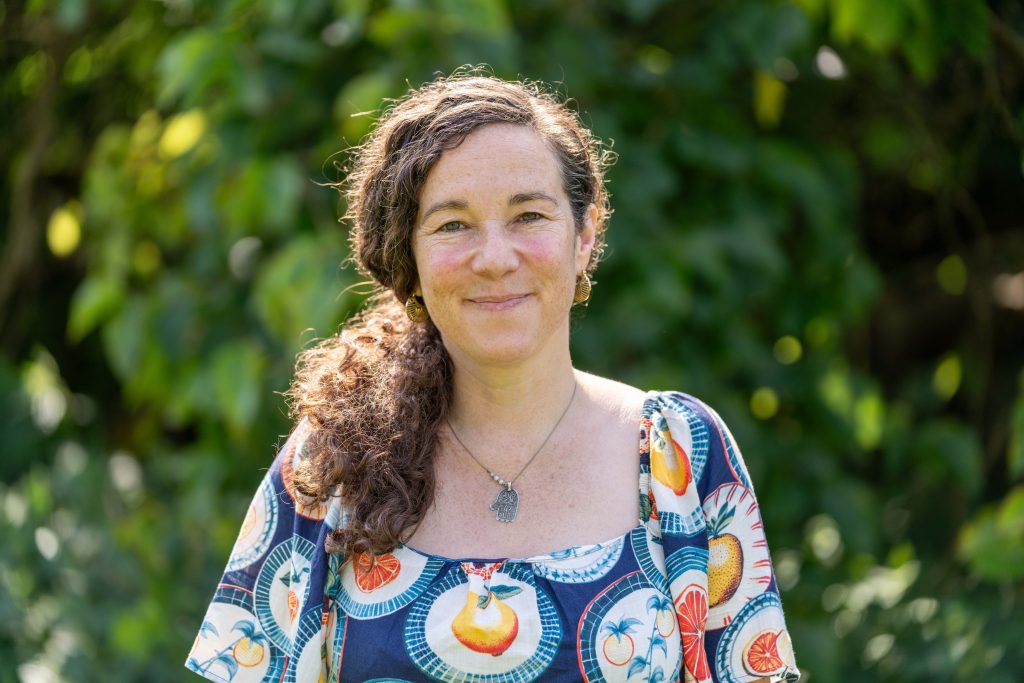
Mel Poluck
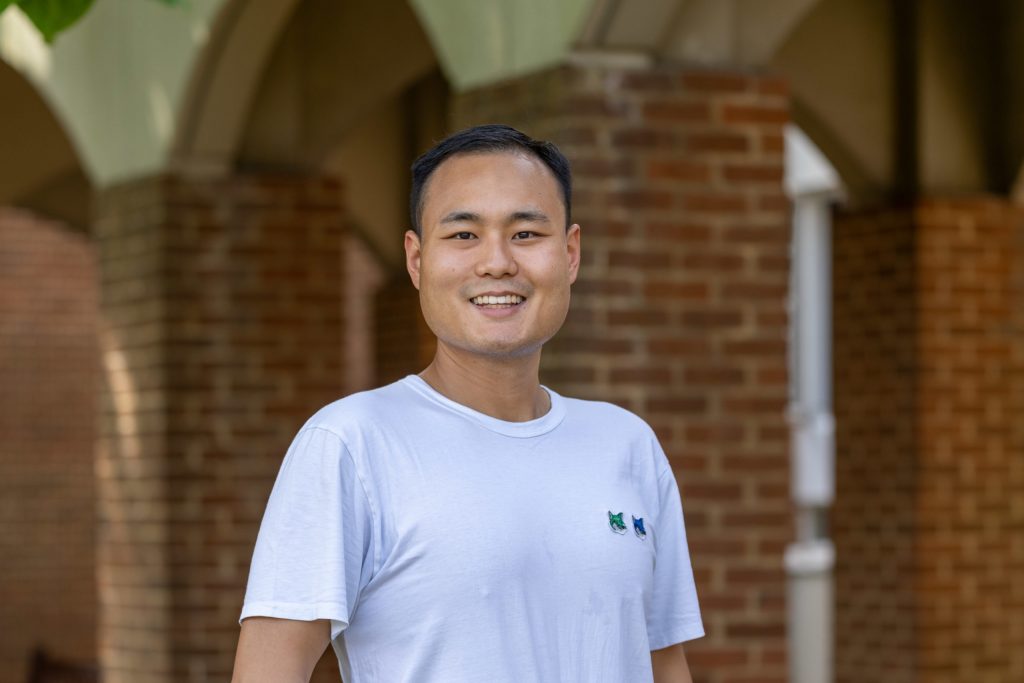
Steve Wang
We come from a range of backgrounds, disciplines and origins — from Norwich to New York – and some of us are alumni of the University of Sussex. We bring expertise that includes research, education, digital media, journalism, administration and communication.
We’ve learnt so much already as we’ve collaboratively designed our values and defined how to achieve our goals.
We’ve adopted an interdisciplinary and non-hierarchal approach to our work, so rather than working independently on different work strands, we’ve come together to identify our strengths, weaknesses, opportunities and risks (and planned how to mitigate the latter); agreed our practices and processes; explored the project’s existing intellectual corpus; and planned the initial design of our core outputs – the first of these are our ‘living database-archive’, a new digital publishing space, and our inaugural international event (watch this site for further announcement coming soon!).
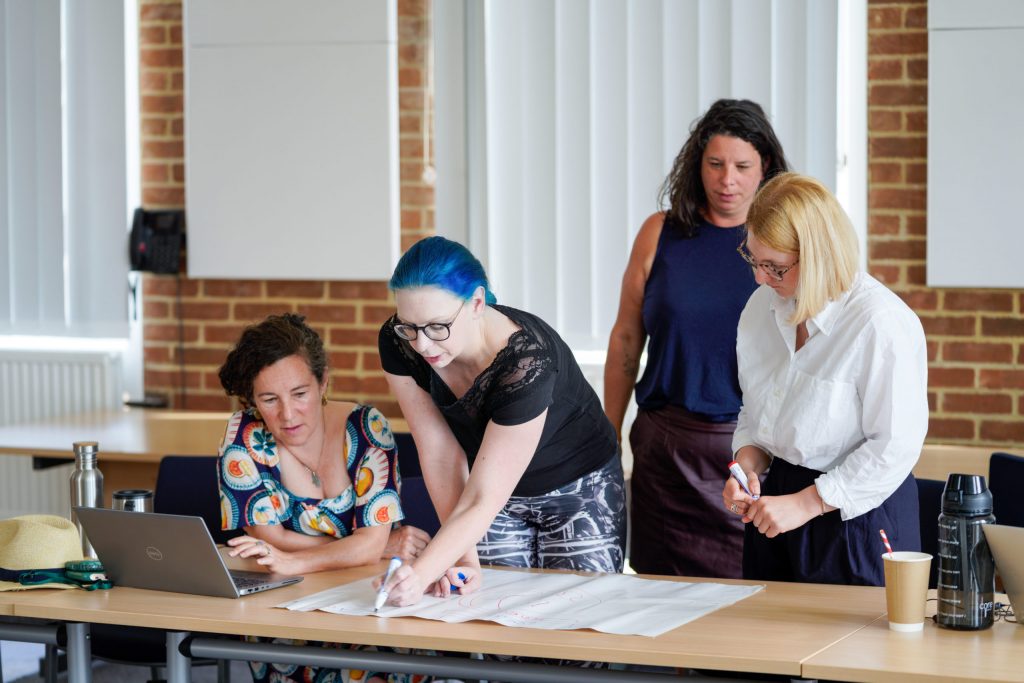
The team planning the design of the ‘living database-archive’.
We’ve learnt that our home, the University of Sussex, is a hotbed of innovation, and there is a wealth of expertise to hand, including the Sussex Digital Humanities Lab – one of the University’s new Centres of Research Excellence within which our project is situated.
We’ve tapped into some brilliant knowledge sharing. In June, we attended the inaugural conference of another Centre of Excellence: Sussex AI and a lecture held by the Sussex Digital Humanities Lab: Feminism confronts AI by Professor Judy Wajcman, from the The Alan Turing Institute.
Some of our research team deepened their connection with wider humanities research at away days held by both the School’s Media, Arts and Humanities Research Institute and the Media, Cultural Studies and Journalism department.
Within Holocaust commemoration, the University of Sussex has a trailblazing reputation. It was the first university in England to host a Holocaust Memorial Day event and continues to do so annually through the Weidenfeld Institute of Jewish Studies, across which our Lab also sits and Victoria is now Deputy Director.
We feel at home here.
But what have we done towards our project goals so far?
On our third day together, we held an event at the University of Sussex called ‘Policy and funding sustainable interventions in digital Holocaust memory and education workshop’ together with The Holocaust and the United Nations Outreach Programme.
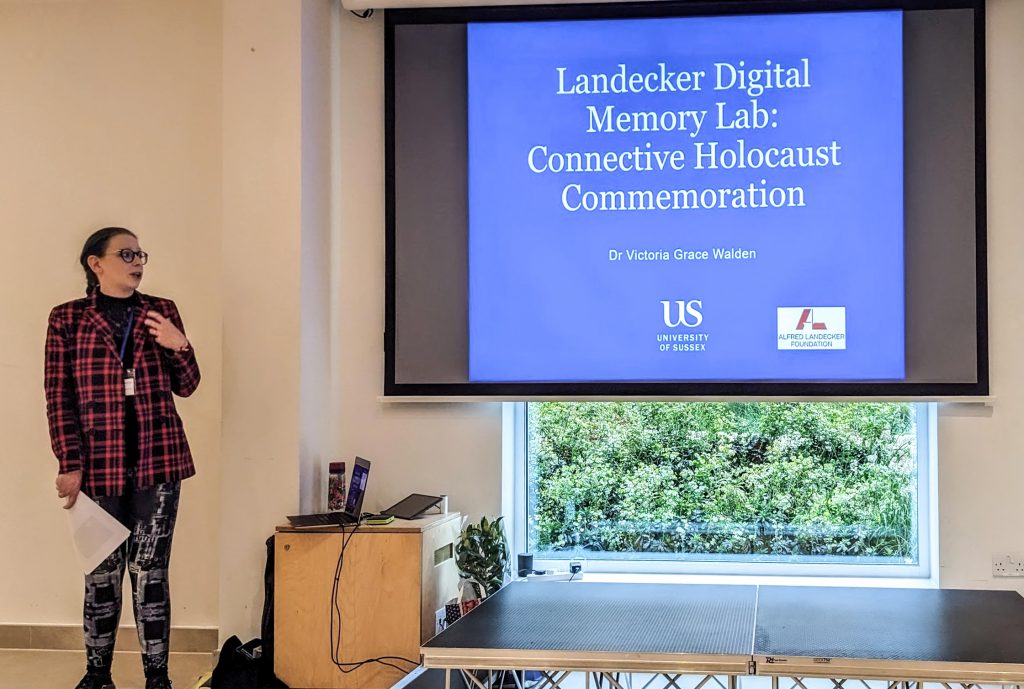
Our Director introduces the Lab to workshop attendees.
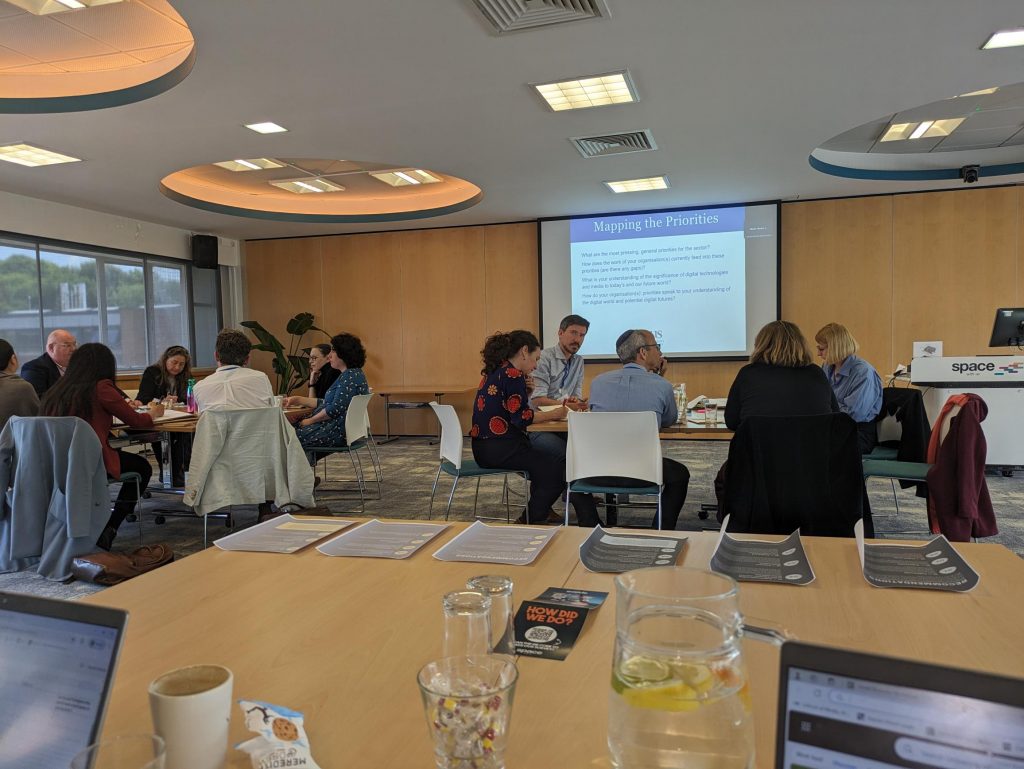
The workshop in progress.
The event was attended by University of Sussex Vice Chancellor Sasha Roseneil, Lord Eric Pickles, Chair of the UK International Holocaust Remembrance Alliance (IHRA) Presidency 2024 and Special Envoy for Post-Holocaust Matters, and representatives from the United Nations, the European Commission, Claims Conference, The Association of Jewish Refugees, The Commonwealth War Graves Commission, European Holocaust Research Infrastructure, UNESCO, and the Alfred Landecker Foundation.
Some participants have told us that the workshop is already informing discussions about how they can better support digital Holocaust memory through rethinking funding models.
We’re currently working on a public report building on the event due to be published this autumn and we’re grateful to the Brighton and Hove Jewish Community – a new Jewish community centre in the city who hosted an opening talk and dinner as part of the programme.
In July, we welcomed our first visiting international junior research fellow, Austin Xie, an undergraduate from the University of Chicago. He is with us for two months researching gaming and Holocaust education. Our first visiting faculty fellows join the team next academic year.
And in the same month, we hosted a workshop at the international annual Memory Studies Association conference, this year held in Lima, Peru, forging new connections with Holocaust museum professionals in Brazil, Argentina and Ecuador. Thanks to the wonderful Malú Machuca Rose, we were able to host this as a bilingual event in English and Spanish.
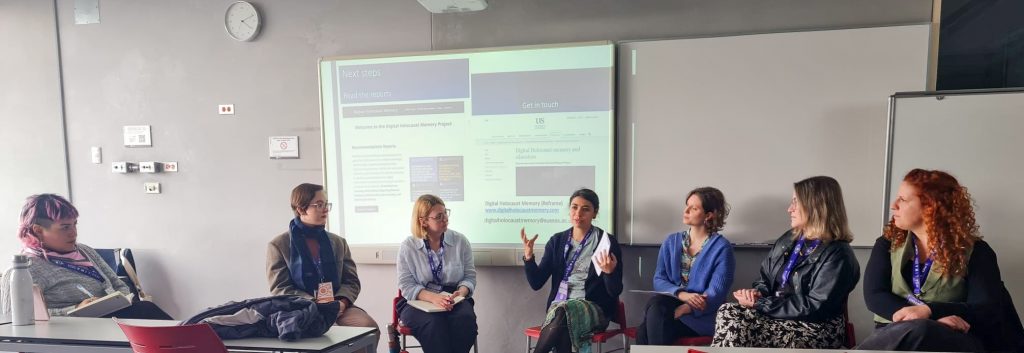
From left to right. Malú Machuca Rose, Bárbara Deoti Silva Rodrigues, Kate Marrison, Gabriela Steinitz, Mariel Goisen, Laura Nicoli Kullock and Brenda Ficher.
Our research fellow Dr Marrison also ran a workshop in London with young people from across the UK aged 16-25 exploring social media and Holocaust education, which was hosted as part of the Holocaust Education Trust’s annual ambassadors conference (AmCon).
Beyond these events, we published two recommendations reports, started planning our first major international event and new digital publishing space, and built momentum with designs for the prototype of our flagship ‘living database-archive’ of global digital Holocaust projects.
This major resource will allow Holocaust memory professionals to learn from existing practice and connect with projects across the globe, and offer researchers easy access to digital Holocaust memory projects. We hope that it will amplify peripheral stories of the Holocaust, how and where they might already be digitised, and throw into sharp relief where digital Holocaust memory is at risk.
We’ll talk more about these activities in subsequent blogs in this series.
Our small, new team has been busy.
But the harder work is yet to come.
Want to know more?